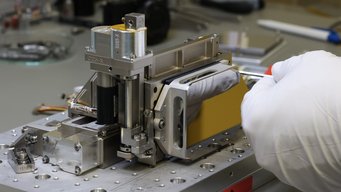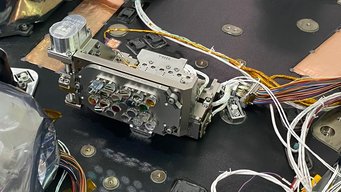Towards discovering a second Earth
MPIA builds essential elements for an instrument of the Roman Space Telescope to test a pioneering camera design
Engineers and scientists of the Max Planck Institute for Astronomy (MPIA), led by Oliver Krause, developed crucial optical elements for the Coronagraph Instrument (CGI) of the Roman Space Telescope and delivered them to the Jet Propulsion Laboratory (JPL) in the USA. The fully assembled and tested CGI recently arrived at the NASA Goddard Space Flight Centre (GSFC), where it will be integrated into the telescope. The CGI will test an innovative camera design that enables direct imaging and spectroscopy of exoplanets in close orbits around distant stars. This design holds the potential for the first direct detection of a second Earth.

The Nancy Grace Roman Space Telescope (formerly WFIRST) has been under development for about a decade under the leadership of NASA. The diameter of the primary mirror is 2.4 metres and is a copy of the Hubble Space Telescope’s main mirror. The Max Planck Institute for Astronomy (MPIA) in Heidelberg, Germany, built the crucial opto-mechanical components for one of the two scientific instruments, the Coronagraph Instrument (CGI). The CGI is a technology study that tests a new measurement design for detecting exoplanets by direct imaging. If it reliably images gas planets similar to Jupiter close to their parent stars in the form of a point of light, as expected, the technique could be used to detect and study rocky planets like Earth with future space telescopes.
MPIA’s contribution to the CGI
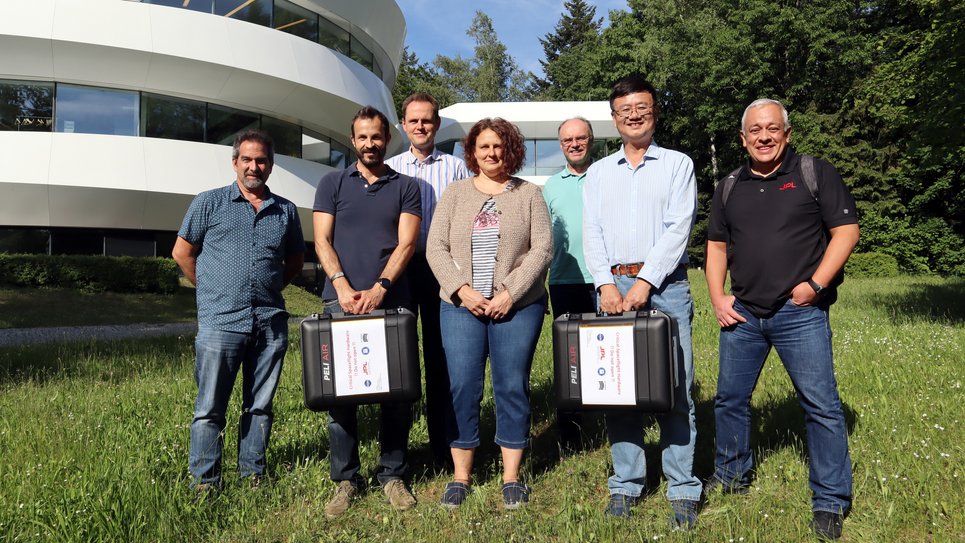
MPIA designed and manufactured six flight models and a further six engineering models of the Precision Alignment Mechanisms (PAM). These mechanisms, which adjust and stabilise optical components such as mirrors and filters of the CGI during observations, were meticulously crafted and rigorously tested in MPIA’s workshops and laboratories. The company von Hoerner & Sulger from the neighbouring town of Schwetzingen provided support during the construction phase.
Oliver Krause, head of the Infrared Space Astronomy research group, and his team have been gradually delivering these CGI core elements to the Jet Propulsion Laboratory (JPL) at the California Institute of Technology (CalTech) in Pasadena, USA, since spring 2022. JPL is part of NASA and is involved in the technical development of space probes.
MPIA is a direct partner of NASA and JPL in the CGI project. Above all, NASA and JPL were impressed by the outstanding achievements in designing and producing the mechanisms for NIRSpec and MIRI, the central instruments of the James Webb Space Telescope. NIRSpec and MIRI have been delivering spectacular images and data since mid-2022.
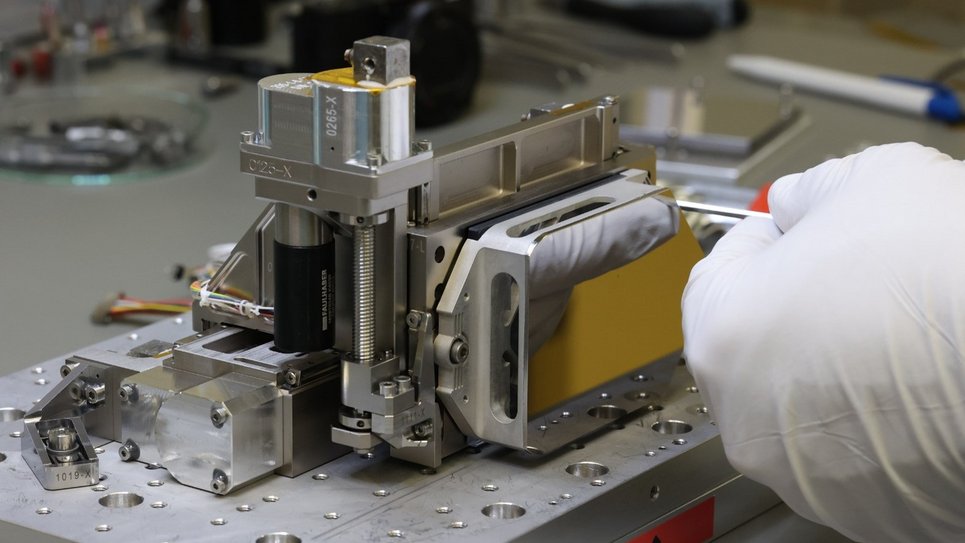
The PAM flight models have already been installed in the CGI and extensively tested for space flight. The identical engineering models are used to verify the specifications on the ground. These include a lifetime model that has already performed over 27,000 movements, roughly twice the load of a flight model during ground tests and the mission in space. Another milestone was the delivery of the CGI to NASA’s Goddard Space Flight Center on 19 May 2024. The instrument will be installed in the telescope and subjected to further extensive functional and stress tests.
A camera design for the search for a second Earth

The CGI combines two common observation techniques for use in space, coronagraphy and adaptive optics, for the first time. Astronomers employ coronagraphs to block out bright objects with dedicated masks to make fainter celestial bodies in their vicinity visible. This method already allowed the detection of exoplanets by direct imaging. However, the masks often cause considerable image artefacts around the blocked-out stars. Thus, any potential exoplanet reflecting the light of its parent star can only be reliably detected at relatively large distances. Therefore, astronomers use this method almost exclusively to find giant gas planets, similar to Jupiter, on wide orbits around their host stars.
Reducing these artefacts is essential to find smaller planets with narrower orbits. Therefore, the CGI is also equipped with an adaptive optics system that enables a higher brightness contrast between the star and the planet. This technology usually helps to reduce disturbances in images taken with ground-based telescopes, caused by the Earth’s turbulent atmosphere.
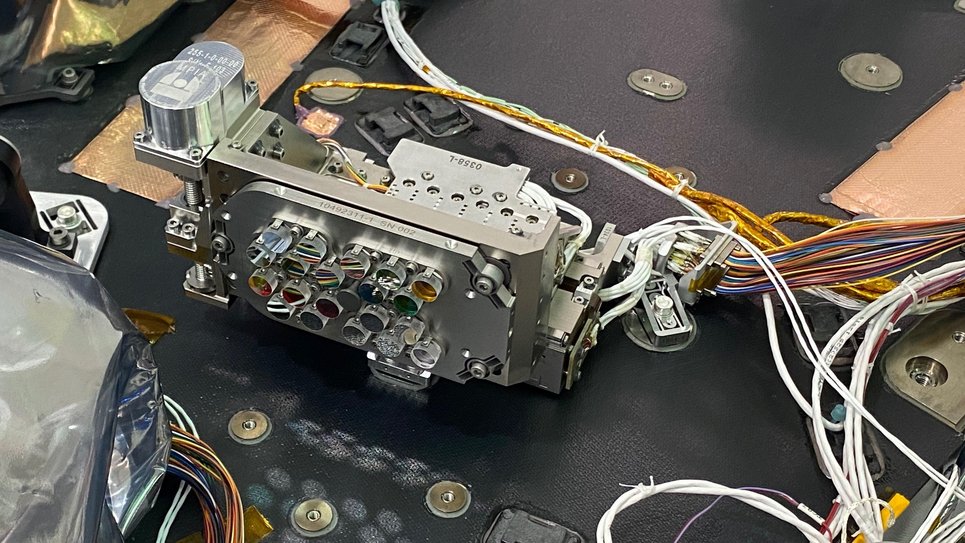
For the CGI, this technology mitigates the distorting effects of the telescope’s optical system. However, the computing power required for this is a new challenge for space cameras. Overall, the scientists should be able to detect exoplanets as close to their bright parent stars as never before, visible as a bright point of light in the image. The CGI is designed to identify a planet whose nearby parent star is a billion times brighter, roughly equivalent to the contrast between Jupiter and the Sun. Compared to today’s capabilities, this corresponds to an improvement of up to a factor of a thousand. A built-in spectrograph will then facilitate research into the composition of the atmosphere of these planets.
Technology with the highest precision

To achieve this, the PAMs manufactured by MPIA must guarantee an extremely high level of accuracy and stability in positioning the optical elements such as filters, coronagraphs and mirrors over several hours. During operation, the PAMs may not tilt by more than 40 milliarcseconds (3.6 million milliarcseconds make up one degree) over eight hours. This constraint corresponds to an angle which would allow you to perceive a person’s height in Los Angeles from Heidelberg.
These requirements and the complexity of the CGI make it the most elaborate and expensive scientific instrument ever to be stationed in space. If the first tests in space are successful, the CGI will be made available to astronomers to study exoplanets.
A blueprint for future generations
If the CGI mission succeeds, optimising the technique may qualify it for future space telescopes such as the Habitable Worlds Observatory. The direct imaging of a second Earth would then be within reach.
The Roman Space Telescope, initially called WFIRST (Wide-Field Infrared Survey Telescope), is named after the astronomer Nancy Grace Roman, who led NASA’s astronomical research programmes for decades. Among other things, she was responsible for the scientific planning of the Hubble Space Telescope. The launch of the Roman telescope is scheduled for 2027.
Background information
The CGI team at MPIA consists of Oliver Krause (PAM project manager), Friedrich Müller (System engineer and assembly manager), Monica Ebert (Design and assembly), Ralf-Rainer Rohloff (Design and component selection), Christopher Ritz (Design and assembly), Armin Böhm (Precision mechanics workshop manager), Tobias Stadler and colleagues from the precision mechanics (Manufacturing of mechanical parts), Lars Mohr and Frank Whrel (Electronics workshop – building PAM EGSE), Ulrich Klaas (Deputy project manager and documentation), Clemens Plank (Project manager 2021 and 2022), Christopher Lee (Project manager 2020), Theodoros Anagnos (Test engineer and test automation), and Arnim Wolf (Procurement and shipping).


